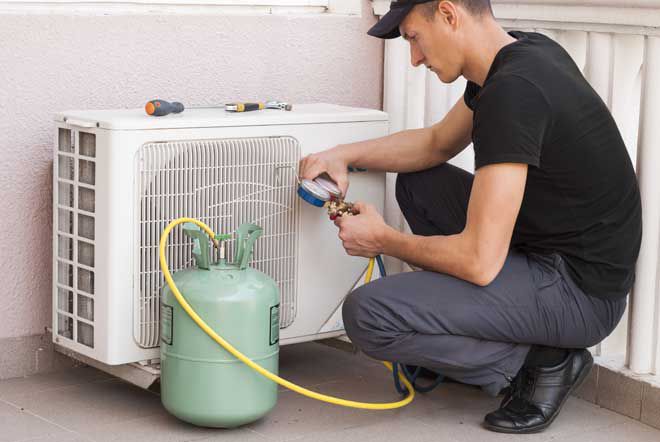Air conditioning units are a staple in many households and commercial buildings, providing comfort and relief during hot summer months. However, these units require maintenance and occasional repairs to ensure their optimal performance. One of the most important components of an air conditioning unit is the refrigerant, commonly known as Freon. In this article, we will discuss the basics of Freon for AC units, including its function, types, and potential hazards.
What is Freon?
Freon is a brand name for a group of refrigerants that are used in air conditioning systems. The term “Freon” is often used interchangeably with refrigerant, but it is important to note that not all refrigerants are Freon. Freon was first introduced by DuPont in the 1930s and was widely used in air conditioning systems until the 1990s when it was discovered that Freon was harmful to the environment.
How does Freon work?
Freon works by absorbing heat from the indoor air and transferring it outside. It does this through a process called refrigeration cycle. The refrigeration cycle consists of four main components: the compressor, condenser, expansion valve, and evaporator. The compressor compresses the refrigerant gas, which raises its temperature. The hot gas then flows through the condenser where it releases heat to the outdoor air. The refrigerant then flows through the expansion valve, which reduces its pressure and temperature. The cold refrigerant then flows through the evaporator where it absorbs heat from the indoor air. The process repeats itself until the desired temperature is reached.
Types of Freon
There are several types of Freon that have been used in air conditioning systems over the years. The most common types include R-22, R-410A, and R-134a.
R-22, also known as HCFC-22, was the most widely used refrigerant in air conditioning systems until it was phased out in 2020 due to its harmful effects on the environment. R-22 is a hydrochlorofluorocarbon (HCFC) that contributes to ozone depletion.
R-410A, also known as Puron, is a hydrofluorocarbon (HFC) that does not contribute to ozone depletion. It is currently the most commonly used refrigerant in new air conditioning systems.
R-134a is another HFC refrigerant that is commonly used in automotive air conditioning systems.
Potential Hazards of Freon
While Freon is essential for the proper functioning of air conditioning systems, it can also pose potential hazards to human health and the environment. Freon is a greenhouse gas that contributes to global warming. It can also deplete the ozone layer, which protects the earth from harmful ultraviolet radiation. In addition, Freon is toxic if inhaled and can cause dizziness, headaches, and nausea. It is important to handle Freon with care and to dispose of it properly.
Maintenance and Repair of AC Units
Proper maintenance and occasional repairs are essential for the optimal performance of air conditioning units. Regular maintenance includes cleaning or replacing air filters, checking and adjusting refrigerant levels, and inspecting electrical components. If your AC unit is not cooling properly or is making unusual noises, it may require repairs. It is important to hire a licensed HVAC technician to perform any repairs or maintenance on your AC unit.
Conclusion
Freon is an essential component of air conditioning systems, but it is important to understand its potential hazards and to handle it with care. There are several types of Freon that have been used over the years, with R-410A being the most commonly used refrigerant in new air conditioning systems. Proper maintenance and occasional repairs are essential for the optimal performance of AC units. If you suspect that your AC unit requires repairs, it is important to hire a licensed HVAC technician to perform the necessary work.



